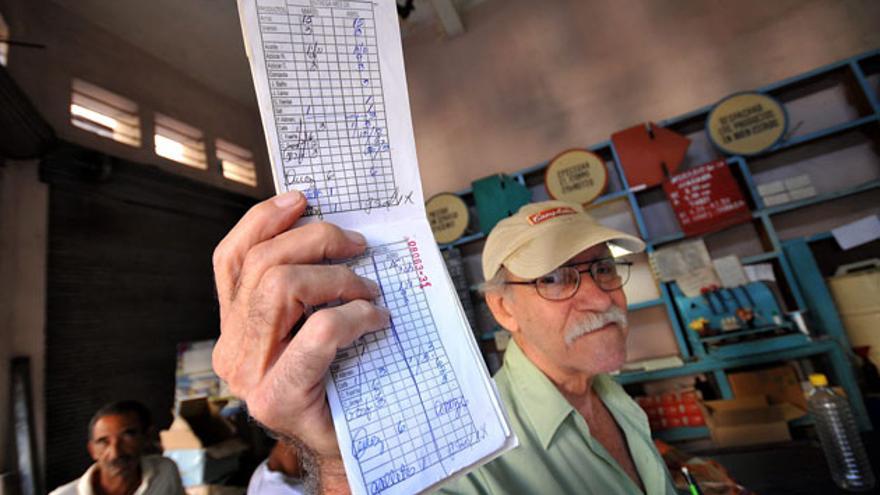
![]() 14ymedio, July 27, 2018 — The decapitalization of the Cuban economy and a decline in productivity has created a “gap” with the rest of Latin America that can only be closed by increasing the rate of investment to 10% to 15% of the gross domestic product (GDP), as noted this Friday by an economist at a conference in Miami.
14ymedio, July 27, 2018 — The decapitalization of the Cuban economy and a decline in productivity has created a “gap” with the rest of Latin America that can only be closed by increasing the rate of investment to 10% to 15% of the gross domestic product (GDP), as noted this Friday by an economist at a conference in Miami.
This is one of the conclusions of a study entitled “What Is the Cuban Economy’s Place in the Region?” It was conducted by the Colombian economist Pavel Vidal Alejandro, who presented it on the second day of the annual conference of the Association for the Study of the Cuban Economy Cuban (ASCE).
This is the first time purchasing power parity (PPP), total GDP, per capita output and productivity of the Cuban economy has been measured.
Vidal points out the problem in relying on Cuban government’s statistics on the exchange rate to calculate GDP is that the official rate of one Cuban peso (CUP) to one US dollar “overestimates the dollar value of the GDP” and distorts it.
Based on the official exchange rate, Cuba’s total GDP in 2014 was 80.65 million dollars while per capita GDP was 7,177 dollars.
But Vidal’s estimate, which is based on the average exchange rate, differs substantially from the official estimate. According to Vidal total GDP and per capita GDP in 2014 were 33.88 million dollars and 3,016 dollars respectively, 60% less than the official estimate.
The economist, a professor at the Pontifical Xavierian University in Cali, used the PPA and formulations from the Penn World Table (PWT), as well as international relative price estimates by the World Bank, to calculate Cuba’s GDP. He then compared the island’s economy with ten economies of similar size in the region.
One of the principal conclusions of his report is that the Cuban economy “has still not achieved the levels of productivity or per capita GDP” it saw in the years preceding the serious economic crisis of the 1990s, known as the Special Period.
In fact Cuba’s total and per capita GDP in 2014 in current dollars relative to the PPA rate “is around 30% lower than 1985 levels.”
Vidal concluded that the Cuban economy shrank relative to the rest of the region and currently is equivalent to 71% of the economy of the Dominican Republic and 61% of the Ecuadoran economy.
It is worth remembering, he notes, that in the 1970s Cuba, along with Uruguay, had the highest per capita GDP in the region. Today, however, the Caribbean nation occupies sixth place among the ten nations — Bolivia, Costa Rica, Dominican Republic, Ecuador, Guatemala, Honduras, Jamaica, Panama, Paraguay and Uruguay — chosen for the comparison.
Although the reforms undertaken by former president Raul Castro were “a step in the right direction,” they are “insufficient” to halt decapitalization and increase productivity. They also fail to leverage advantages the island has in education.
Vidal feels that, if Cuba wants to recover lost ground, it will have to increase productivity, something only possible if it commits to significant structural reforms and increased investment.
He believes increasing the rate of investment must be “the number one priority” in being able to halt decapitalization, which he sees as a disadvantage that has worsened since 2011 with the emigration of the young labor force.
In the realm of education, the economist points out that classroom and academic instruction had been one of Cuba’s important advantages that helped close the gap in the 1970s and 1980s. However, that is no longer the case. Today there are few opportunities for a qualified work force, one of the principal contradictions of the reforms.
In conclusion, he observes that the “socialist system has shrunk the Cuban economy relative to the rest of the region.”
_____________________
The 14ymedio team is committed to serious journalism that reflects the reality of deep Cuba. Thank you for joining us on this long road. We invite you to continue supporting us, but this time by becoming a member of 14ymedio. Together we can continue to transform journalism in Cuba.
